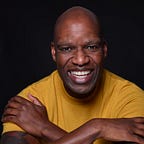We’re Here: ‘The Color Purple’ and the Power of Black Music
How songs in the key of life have been integral to our survival.
If I’ve said it once, I’ve said it too many times to count: I’m not really into musicals. As with everything, there are exceptions (The Sound of Music, Chicago, Evita), but in general, when characters suddenly burst into song, it not only interrupts the story; it takes me right out of it.
Let’s say, though, that you loved Hamilton and have no problem with characters who sing, dance, and rap when, in real life, they’d probably simply be talking. Can singing characters ruin a movie by devaluing the dramatic tension? Are some stories too sacred and somber to be zhuzhed up with choreography?
I thought about this a lot after watching the new movie musical adaptation of the 1985 film The Color Purple and discussing it with a friend. She made an interesting point about the song-and-dance-filled take on Alice Walker’s 1982 Pulitzer Prize-winning novel, which stars third-season American Idol champion Fantasia Barrino as Celie, the central character, and spans 36 years, from 1909 to 1945. Celie endures decades of physical and emotional abuse at the hands of her husband, Mister, a moniker that, as Taraji P. Henson’s Shug Avery suggests, is loaded with dark subtext.
